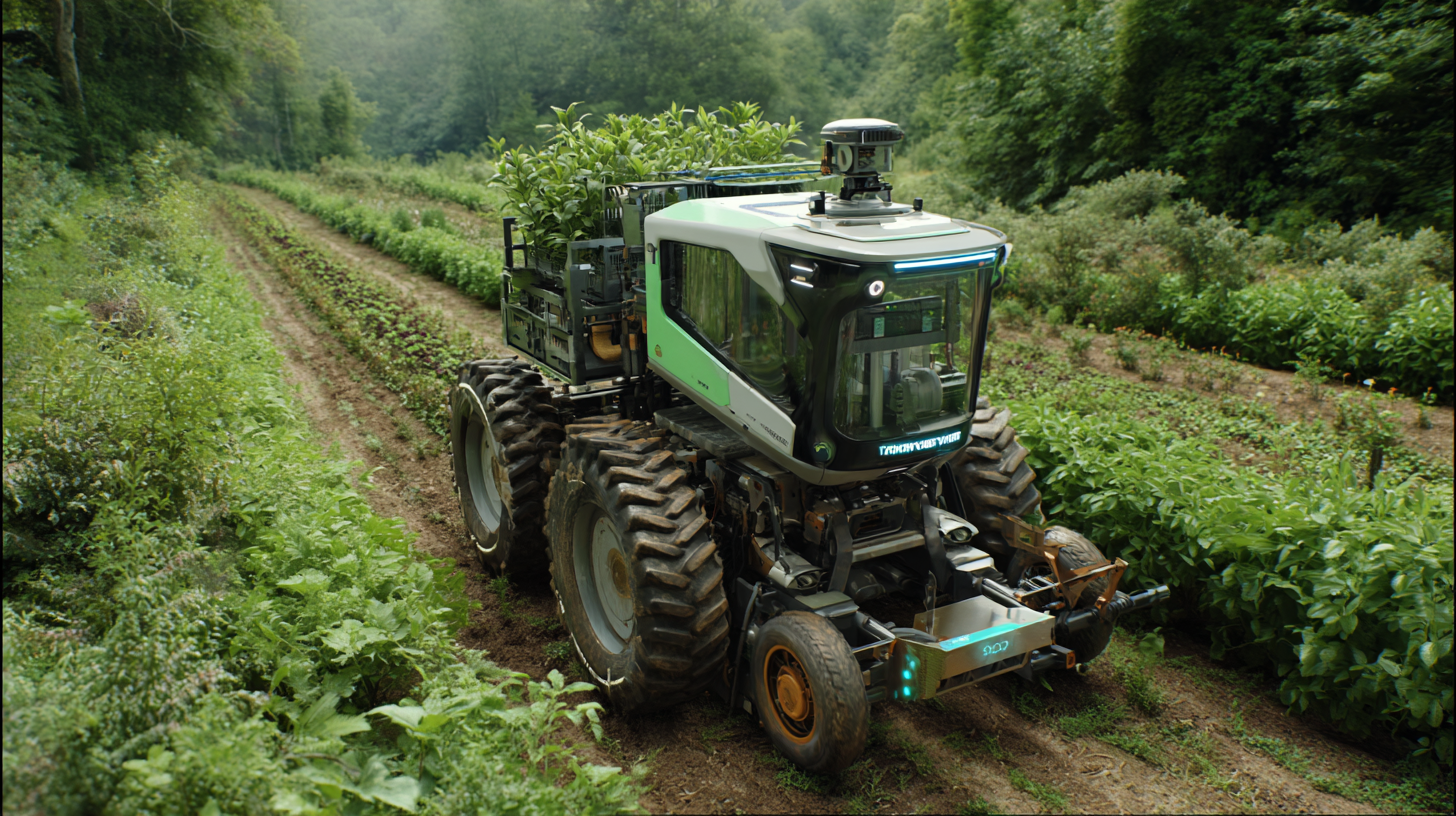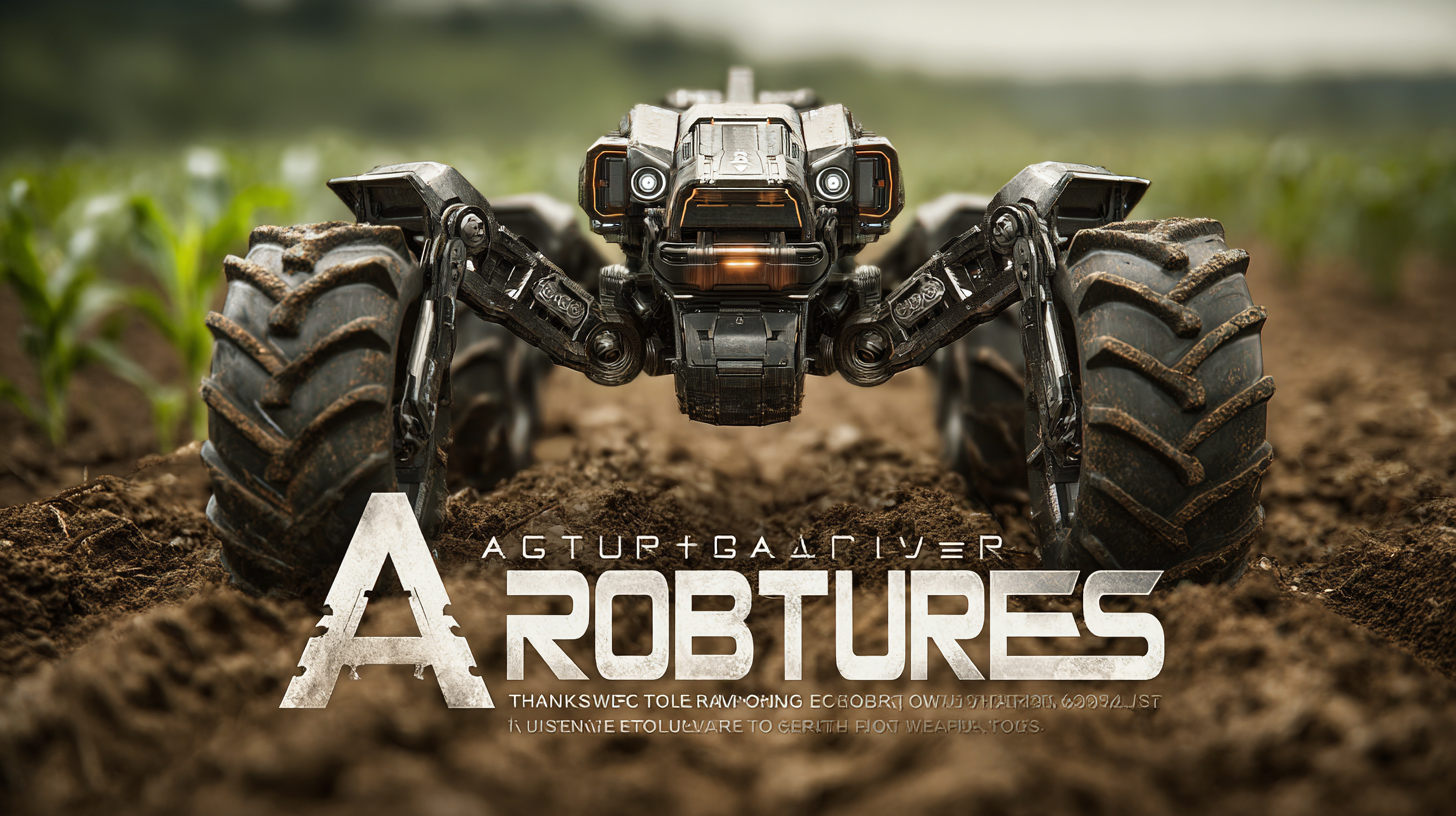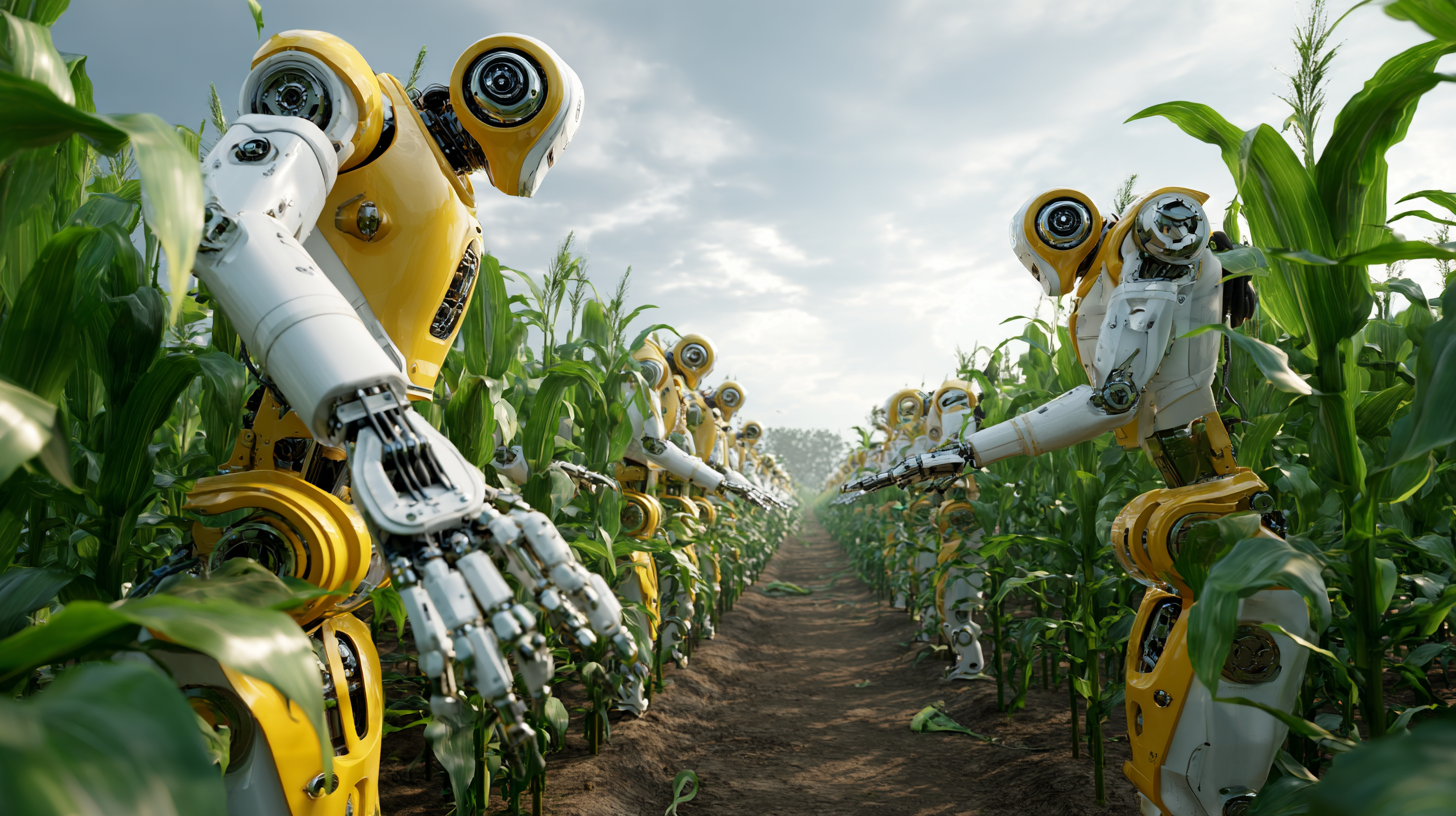
sale@excitechrobot.com

14, Raghava Enclave, Transport Road, Secunderabad, Hyderabad (500009)
©2024 All Rights Reserved by BlackCoffeeRobotics
As we approach 2025, the agricultural industry is on the brink of a technological revolution that promises to optimize productivity and efficiency through the use of innovative Agriculture Robots. According to a report by the International Federation of Robotics, the global agricultural robotics market is projected to reach $20 billion by 2025, as more farmers seek advanced solutions to tackle labor shortages and enhance crop yields. In a world where the demand for food continues to rise—estimated to increase by 70% by 2050—leveraging smart robotics can play a crucial role in transforming farming practices, improving sustainability, and maximizing profitability. This blog will explore the best agriculture robots available today and provide insights on how farmers can effectively implement these technologies to thrive in the global market, all while contributing to food security and environmental stewardship.

The integration of robotics into traditional farming practices presents several challenges that farmers must navigate to fully leverage the benefits of agricultural technology. According to a recent report by the International Society of Precision Agriculture, up to 70% of farmers express concerns about the costs associated with implementing robotic systems. These fears often stem from the initial investment and maintenance costs, which can be particularly daunting for small to mid-sized farms operating on tighter margins.
Moreover, adapting these high-tech systems to existing workflows can create additional hurdles. Data from the Food and Agriculture Organization indicate that only 30% of farms globally have adopted advanced automation, due in part to resistance from farmers who are accustomed to conventional methods. To ease this transition, it's crucial for agricultural engineers and technologists to develop user-friendly interfaces and provide comprehensive training.
Tips for Optimizing Robotics Use:

As we look towards 2025, the integration of agriculture robots is set to redefine traditional farming practices. Key agricultural tasks that are particularly suited for robot intervention include planting, weeding, and harvesting. Each of these processes can benefit from automation, reducing time and labor costs while increasing efficiency and precision.
When considering the implementation of agricultural robots, it’s crucial to identify specific tasks that maximize their benefits. Robots can be programmed to plant seeds at optimal depths and spacing, ensuring uniform crop growth. In weeding, robot-assisted technologies can selectively remove unwanted plants without damaging crops, thereby minimizing the need for harmful herbicides.
**Tip:** Invest in multifunctional robots that can be easily adapted for various tasks as your agricultural needs evolve. This flexibility will allow you to optimize their use across different seasons and crops.
Additionally, monitoring systems equipped on these robots can provide valuable data on soil health and crop conditions, enabling farmers to make informed decisions.
**Tip:** Regularly analyze the data collected by your robots to make precise adjustments in your farming practices, ensuring sustainable and profitable yields.

In the face of rapid technological advancements, the agricultural sector is increasingly confronted with the challenge of integrating automation and robotics into traditional farming practices. Strategies for overcoming resistance to automation in agriculture are crucial for embracing the benefits of innovations such as IoT and robotics. According to a report from the Food and Agriculture Organization (FAO), up to 70% of farmers express concerns about job losses and the reliability of automated systems. Addressing these concerns requires comprehensive education and training programs that demonstrate how automation can enhance efficiency and sustainability rather than replace human labor.
Moreover, investments in smart agriculture are on the rise, with the global agricultural robotics market projected to reach $20 billion by 2025, according to a recent industry analysis. This anticipated growth highlights the need for farmers to recognize the financial incentives of adopting these technologies. By showcasing successful case studies where automation has improved crop yields and reduced labor costs, stakeholders can effectively shift perceptions and foster a culture of acceptance. Furthermore, emphasizing collaboration between human workers and robots rather than competition will encourage farmers to embrace these technological advancements, paving the way for a more sustainable agricultural future.
| Robot Type | Primary Function | Efficiency Gain (%) | Adoption Barriers | Best Practices for Optimization |
|---|---|---|---|---|
| Autonomous Tractors | Soil Tillage & Planting | 30 | High Initial Cost, Lack of Awareness | Training Programs, Lease Options |
| Drones | Crop Monitoring | 25 | Regulatory Issues, Technology Literacy | User Workshops, Simplified Software |
| Robotic Harvesters | Harvesting | 40 | Labor Shortage, Adaptability | Field Trials, Collaboration with Farmers |
| Weed Control Robots | Weed Management | 20 | Ecosystem Change, Cost-Effectiveness | Cost-Benefit Analyses, Pilot Projects |
| Precision Sprayers | Pest & Nutrient Application | 35 | Integration with Existing Systems | Interoperability Standards, Modular Solutions |
As agricultural robots continue to revolutionize farming practices, understanding the return on investment (ROI) becomes crucial for farmers looking to innovate. A new study indicates that the introduction of drone technology in crop management can significantly enhance yields, offering farmers substantial returns when integrated effectively. This highlights the importance of accurately measuring the financial benefits derived from such advancements, especially as digital agriculture evolves.
However, measuring ROI in agriculture is fraught with challenges. Farmers often grapple with determining which fields provide the most substantial profit margins, factoring in various elements like soil health, crop type, and environmental conditions. Recent innovations have led to the development of tools that assist in pinpointing these financial metrics, yet the complexity of agricultural ecosystems can complicate predictions. As smart sensor technologies and AI applications advance, they hold the potential to refine these measurements, ultimately empowering farmers to make informed decisions that optimize their investment in agricultural robotics.
As the agriculture robotics market is projected to grow from $8.13 billion in 2025 to $26.35 billion by 2032, with a compound annual growth rate (CAGR) of 18.3%, the focus on training farmers to effectively utilize these technologies is critical. Adopting best practices in training programs will ensure that farmers not only understand how to operate these sophisticated machines but also how to integrate them into their daily farming routines for maximum efficiency.
Training should emphasize hands-on experience with the robots, allowing farmers to gain confidence and proficiency. Interactive workshops, online tutorials, and peer mentoring can play pivotal roles in enhancing farmers' skills. Moreover, curriculum development should include not only technical operation but also data analytics for precision farming, enabling farmers to make informed decisions based on robot-collected data.
Furthermore, fostering a culture of innovation in agriculture is essential. Encouraging farmers to share their experiences and strategies on utilizing robotics can spur collaborative learning and adaptation of best practices across the industry. By investing in comprehensive training, the agricultural community can ensure that the transition towards automation is smooth, effective, and beneficial for all stakeholders involved.
